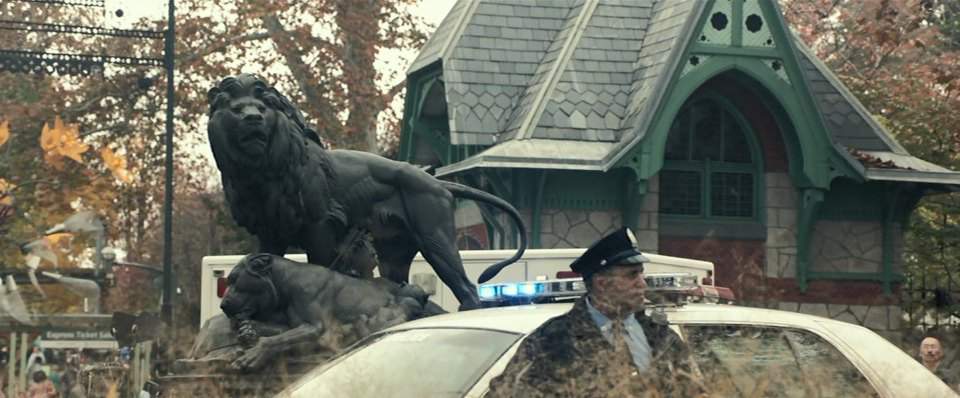Ad Blocker Detected
We use ads to keep this site running, so please consider disabling your ad blocker. Thank you!
Do not know how to disable ad blocker? Check out this article: How to disable ad blocker?
Split 2017

As 23 personalities under Dr. Fletcher's scrutiny, Kevin's psyche harbors one last, volatile entity waiting to emerge. With Casey and her friends in tow, Kevin's fragile equilibrium crumbles, unleashing a maelstrom of psychological terror. As the lines between his personas blur, the very fabric of reality teeters on collapse, threatening those around him with a descent into madness.
Does Split have end credit scenes?
Yes!
Split does have end credit scenes.
Actors
Meet the cast of Split and learn about the talented actors who brought the characters to life. Explore their roles and career highlights.
Links
Explore where to watch Split online. Find reviews, ratings, and detailed movie information on other platforms like Metacritic, Rotten Tomatoes, Media Stinger or TMDb
Ratings
Discover how Split is rated on popular platforms like IMDb, Metacritic, and TMDb. Explore audience and critic scores to see how this movie ranks among the best.

63
Metascore
7.0
User Score


%
TOMATOMETER

0%
User Score

73
%
User Score

3.5
From 4.7K fan ratings
Movie Quiz
Challenge your knowledge of Split with an engaging quiz. Test your memory of the movie’s characters, plot twists, and unforgettable moments.
Split Movie Quiz: Test your knowledge on the psychological thriller 'Split' and its complex characters and storylines.
What event disrupts Casey and Claire's departure after Claire's birthday celebration?
Awards
Discover the awards and nominations received by Split. Explore the history of Split and its cast and crew.
Plot Summary
Get the full story of Split with a detailed plot summary. Dive into its themes, characters, and the twists that make it a must-watch.
The story unfolds during Claire’s birthday party, which turns awkward when Casey is reluctantly invited to join in the festivities. While Claire (played by Haley Lu Richardson) recounts tales of Casey’s troubles at school to her father (Neal Huff), it becomes apparent that their friendship is more of a necessity than a genuine bond. Their plans to head home are abruptly interrupted by a mysterious stranger named Kevin (portrayed by James McAvoy), who intrudes on their ride, revealing sinister motives by rendering them unconscious.
Upon waking, Casey finds herself trapped with Claire and Marcia (played by Jessica Sula) in a stark room, where dark realities begin to unfold. Marcia’s cries for help highlight their shared distress, sparking a debate on how to confront their captor. While Claire advocates for solidarity, Casey maintains an unnerving calmness, focusing on strategy.
The narrative then shifts to a serene childhood memory of Casey (played by Izzie Leigh Coffey) learning survival skills from her father (Sebastian Arcelus) and Uncle John (Brad William Henke). Uncle John’s whimsical stories of hunting bring a sharp contrast to the horrors awaiting the girls.
Meanwhile, Dr. Karen Fletcher (played by Betty Buckley), a perceptive therapist, becomes captivated by reports of the missing girls, particularly compelled by an email from one of Kevin’s numerous personalities, Barry. Unbeknownst to her, Barry is just one facet of Kevin, whose psychological complexities and alter egos stretch the limits of belief.
As the girls struggle for escape, they notice a sliver of light through the door, spurred by the arrival of a seemingly kind woman who is, in fact, another of Kevin’s personalities, Patricia. This British-accented persona offers words of reassurance while gleefully outlining fictionally imposed rules regarding their decorum.
In the meantime, Dr. Karen discusses dissociative identity disorder in a video call, unraveling the peculiarities of Kevin’s mind. She highlights a phenomenon she refers to as “the light,” revealing how certain identities can alter their own physical state through sheer will.
While navigating their confounding reality, another personality manifests: Hedwig, who exhibits childlike tendencies. Casey attempts to manipulate Hedwig’s affections to gain an edge. However, her strategies leap between playful dialogue and perilous situations as the girls desperately seek a means to break free.
Just as Claire is on the verge of escape, Kevin morphs back into his more aggressive persona, Dennis, compelling her to remain concealed. A precarious dance unfolds between the girls and their captor, highlighted by tension-laden moments of nearly succeeding and tragic failures.
Throughout these harrowing events, Karen and her assistant, Jai (M. Night Shyamalan), meticulously analyze surveillance footage that hints at Kevin’s manipulative nature. This blend of horror and intrigue carries throughout the narrative, revealing the extent of Kevin’s fragmented psyche, while moments of innocence in Casey’s childhood threaten to echo as she faces her most dangerous obstacles.
As the climax builds, Casey finds herself besieged by The Beast, a monstrous representation of Kevin’s inner battles. With ruthless physicality, The Beast’s transformation represents the culmination of Kevin’s fractured identities, each vying for dominance while Casey becomes a reluctant key player in this tragic game of survival.
In a gripping finale, Casey realizes the grotesque reality of her friends’ fates. As she grapples with the chaos, a chance invocation of Kevin’s true self— “Kevin Wendell Crumb”—further complicates the unfolding terror.
Casey’s harrowing journey through torture, manipulation, and her struggle against the monstrous The Beast culminates in a poignant moment where vulnerability sparks an unexpected connection, leading to a precarious negotiation for survival.
As the storm of turmoil subsides, Casey emerges from the inferno of violence, yet the shadows of Kevin’s psyche cling tightly, leaving an eerie mark on her existence. The closing scenes weave her escape with the grim reminder of Kevin’s identity and the enigmatic cycle of victimhood and monstrosity that haunts their intertwined fates. In a chilling nod to the past, a lingering mention of “Mr. Glass” juxtaposes the narrative, leaving a haunting echo of long-buried truths, forever shifting perceptions of sanity and identity.
Videos
See the latest videos related to Split. Explore trailers, interviews, and behind-the-scenes content that give you a deeper look into the film.
Movie Cars
Explore the iconic cars featured in Split. Discover the vehicles that played a role in the movie, their details, and their significance.
Keywords
Discover the keywords that describe the themes and topics of the movie. Explore the keywords that define the essence of the film.
Featured on this page

What's After the Movie?
Not sure whether to stay after the credits? Find out!
Check out our other apps:
Actors
Companies
Latest Movies
© 2025 What's After the Movie. All rights reserved.































